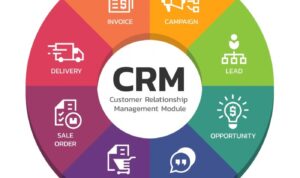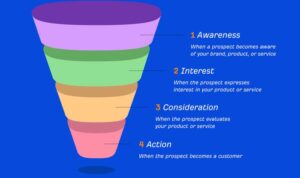Influencer Marketing Guide sets the stage for navigating the dynamic world of digital marketing, offering a roadmap to harness the power of influencers in driving brand success. From defining the concept to exploring innovative trends, this guide is your key to unlocking the potential of influencer collaborations.
Whether you’re a seasoned marketer or a newcomer to the field, this comprehensive guide will equip you with the knowledge and insights needed to craft compelling influencer campaigns that resonate with your target audience.
Introduction to Influencer Marketing

Influencer marketing has become a powerful tool in today’s digital landscape, allowing brands to reach their target audience through trusted voices in the online community. Unlike traditional marketing strategies, influencer marketing leverages the credibility and authenticity of social media influencers to promote products or services in a more authentic and engaging way.
Significance of Influencer Marketing
Influencer marketing is essential for brands looking to connect with consumers on a more personal level. By partnering with influencers who have a loyal following, brands can tap into niche markets and drive engagement and conversions. According to a study by Influencer Marketing Hub, businesses are making an average of $5.20 for every $1 spent on influencer marketing, showcasing the effectiveness of this strategy.
Successful Influencer Marketing Campaigns
- Collaboration between Kylie Jenner and Adidas resulted in a successful sneaker launch, generating buzz and driving sales.
- Daniel Wellington’s partnerships with micro-influencers on Instagram led to a significant increase in brand awareness and sales.
- The #AerieReal campaign by Aerie, featuring body-positive influencers, received widespread praise for promoting inclusivity and authenticity.
Types of Influencers
When it comes to influencer marketing, there are different types of influencers that brands can collaborate with to promote their products or services. Each type of influencer comes with its own set of advantages and disadvantages, making it essential for brands to choose the right one for their specific campaign goals.
Micro-Influencers
Micro-influencers are individuals with a smaller but highly engaged social media following, typically ranging from 1,000 to 100,000 followers. They often have a niche audience and can generate high levels of trust and engagement with their followers. Working with micro-influencers can be cost-effective and result in authentic recommendations. However, they may have limited reach compared to macro or celebrity influencers.
Macro-Influencers
Macro-influencers have a larger following, usually ranging from 100,000 to 1 million followers. They have a broader reach and can help increase brand visibility and awareness. Collaborating with macro-influencers can be beneficial for reaching a wider audience quickly. However, working with them can be more expensive, and their content may be perceived as less authentic compared to micro-influencers.
Celebrity Influencers
Celebrity influencers are well-known figures in the entertainment or sports industry with millions of followers. They have a massive reach and can significantly boost brand awareness. Partnering with celebrity influencers can give brands access to a large and diverse audience. However, it can be extremely costly, and their endorsements may not always resonate with their followers as genuine.
Choosing the Right Influencer
When selecting the right type of influencer for a campaign, brands should consider their target audience, budget, campaign goals, and the level of authenticity they want to achieve. Micro-influencers are ideal for niche markets and authentic content, while macro-influencers are suitable for broader reach and brand visibility. Celebrity influencers are best for massive brand exposure but come with a higher price tag.
Finding the Right Influencers

Finding the right influencers for your brand collaboration is crucial for the success of your influencer marketing campaign. It requires careful research and alignment of values to ensure a mutually beneficial partnership.
Identifying Potential Influencers
- Start by defining your target audience and identifying influencers who resonate with them.
- Utilize social media platforms like Instagram, YouTube, and TikTok to search for popular influencers in your niche.
- Look for influencers who have a genuine connection with their followers and engage regularly with them.
Aligning Values
- It’s essential to align the values and beliefs of the influencer with your brand values to maintain authenticity.
- Choose influencers who genuinely support your brand and can communicate its message effectively to their audience.
- Avoid partnering with influencers whose values may conflict with your brand image to prevent any backlash or negative impact.
Tools and Platforms
- Use influencer marketing platforms like AspireIQ, Upfluence, and Influencity to discover and connect with influencers in various niches.
- Social media analytics tools like Social Blade and Hootsuite can help analyze influencer performance and engagement metrics.
- Collaborate with influencer agencies or consult with influencer marketing professionals to identify the right influencers for your brand.
Building Successful Influencer Partnerships
Building successful partnerships with influencers is essential for a brand’s marketing strategy. Authenticity is key when it comes to working with influencers, so here are some tips to help you create genuine relationships with them.
Tips for Creating Authentic Relationships with Influencers
- Engage with influencers on social media by liking, commenting, and sharing their content.
- Personalize your outreach by mentioning specific posts or projects they’ve worked on that you admire.
- Offer value to influencers beyond just monetary compensation, such as exposure or access to exclusive events.
- Communicate openly and honestly about expectations, deliverables, and goals to build trust.
Strategies for Negotiating Contracts and Agreements with Influencers
- Clearly Artikel deliverables, timelines, and compensation in the contract to avoid misunderstandings.
- Negotiate terms that are mutually beneficial for both your brand and the influencer.
- Consider including performance metrics and bonuses based on results to incentivize influencers.
- Seek legal advice to ensure that the contract protects both parties’ interests.
Examples of Successful Influencer-Brand Partnerships and Their Impact
-
One successful partnership was between Nike and fitness influencer Kayla Itsines, which led to a significant increase in sales of Nike workout gear.
-
Another example is the collaboration between Starbucks and lifestyle influencer Chiara Ferragni, resulting in a boost in brand awareness and social media engagement.
-
The partnership between Adidas and soccer player Lionel Messi resulted in a series of successful marketing campaigns that resonated with fans worldwide.
Creating Effective Influencer Marketing Campaigns
Influencer marketing campaigns can be a powerful tool to reach your target audience and drive engagement. To develop a successful influencer marketing campaign, it is crucial to follow specific steps and set clear goals and KPIs to measure success.
Setting Clear Campaign Goals and KPIs
When creating an influencer marketing campaign, it is essential to define clear goals that align with your overall marketing objectives. Whether you aim to increase brand awareness, drive website traffic, or boost sales, setting specific and measurable goals will help guide your campaign strategy. Key Performance Indicators (KPIs) should also be established to track the performance of your campaign and determine its effectiveness.
- Identify your target audience and key messaging to resonate with them.
- Establish measurable goals such as reach, engagement, conversions, or ROI.
- Define specific KPIs to track the success of your campaign, such as click-through rates, social shares, or sales attributed to influencer partnerships.
- Communicate these goals and KPIs clearly with your influencers to ensure alignment and collaboration.
Measuring Success and ROI of Influencer Marketing Campaigns
Measuring the success and ROI of your influencer marketing campaigns is crucial to understanding their impact and optimizing future strategies. By analyzing key metrics and performance data, you can evaluate the effectiveness of your campaigns and make data-driven decisions for future collaborations.
- Track engagement metrics such as likes, comments, shares, and click-through rates to gauge audience interaction with your content.
- Use unique tracking links, discount codes, or affiliate codes to attribute sales and conversions directly to influencer partnerships.
- Analyze the overall reach and brand sentiment generated by the campaign to assess brand awareness and perception among your target audience.
- Calculate the Return on Investment (ROI) by comparing the costs of the campaign with the generated revenue or other valuable outcomes.
Compliance and Legal Considerations
In the world of influencer marketing, it’s crucial to understand the legal guidelines and regulations that govern this industry. From transparency to disclosure requirements, compliance is key to successful collaborations with influencers.
FTC Guidelines and Disclosure Requirements
- According to the Federal Trade Commission (FTC), influencers must disclose any partnerships or sponsorships with brands in a clear and conspicuous manner.
- Disclosure should be upfront and easy to notice, whether it’s through hashtags like #ad or #sponsored, or a simple mention at the beginning of a post.
- Failure to comply with these guidelines can result in fines or legal action, so it’s essential for both influencers and brands to prioritize transparency.
Tips for Ensuring Compliance
- Educate influencers: Make sure your influencers are aware of the FTC guidelines and provide them with clear instructions on how to disclose partnerships.
- Use disclosure tools: Platforms like Instagram have built-in tools that allow influencers to easily disclose paid partnerships, making compliance simpler.
- Monitor content: Regularly check your influencers’ posts to ensure they are following disclosure guidelines correctly, and provide feedback when necessary.
- Consult legal experts: When in doubt, seek advice from legal professionals who specialize in influencer marketing to ensure full compliance with regulations.
Trends and Innovations in Influencer Marketing: Influencer Marketing Guide
In the fast-paced world of influencer marketing, staying on top of the latest trends and innovations is crucial to success. Let’s delve into the current landscape and explore what’s shaping the industry.
Micro-Influencers: The Rise of Authenticity
- Micro-influencers, with smaller but highly engaged audiences, are gaining popularity for their authentic and relatable content.
- Brands are collaborating with micro-influencers to reach niche markets and build genuine connections with consumers.
- These influencers often have higher engagement rates and can drive meaningful results for brands.
Video Content Dominance
- Video content continues to dominate the influencer marketing scene, with platforms like TikTok and Instagram Reels leading the way.
- Short-form videos are capturing audience attention and providing new opportunities for creative collaborations between influencers and brands.
- Brands are investing more in video content creation to keep up with the trend and connect with their target audience effectively.
AI-Powered Influencer Marketing
- Artificial intelligence is revolutionizing influencer marketing by helping brands identify the right influencers for their campaigns more efficiently.
- AI tools can analyze vast amounts of data to match brands with influencers based on audience demographics, engagement levels, and content relevance.
- This technology streamlines the influencer selection process and improves campaign performance through data-driven decisions.
Case Studies and Examples
In this section, we will explore some successful influencer marketing campaigns and analyze the strategies and tactics that made them effective.
Fashion Nova x Cardi B Collaboration, Influencer Marketing Guide
- Fashion Nova partnered with rapper Cardi B to create a clothing line, leveraging her massive social media following to promote the collection.
- The campaign focused on authenticity and inclusivity, with Cardi B actively involved in the design process and promoting the line on her social channels.
- The collaboration resulted in a sold-out collection within hours of the launch, showcasing the power of influencer partnerships in driving sales and brand awareness.
Daniel Wellington’s Micro-Influencer Strategy
- Watch brand Daniel Wellington successfully utilized micro-influencers with smaller but highly engaged audiences to promote their products.
- By sending free watches to these influencers in exchange for sponsored posts, Daniel Wellington was able to reach a wider audience and generate buzz around their brand.
- This strategy led to a significant increase in brand visibility and sales, demonstrating the effectiveness of working with micro-influencers.
Sephora’s Beauty Insider Community Campaign
- Sephora created a dedicated online community for beauty enthusiasts, providing a platform for customers to interact, share tips, and review products.
- The beauty retailer collaborated with top beauty influencers to engage with the community, creating a sense of exclusivity and trust around the brand.
- This campaign not only strengthened Sephora’s relationship with customers but also increased brand loyalty and drove sales through authentic influencer endorsements.





